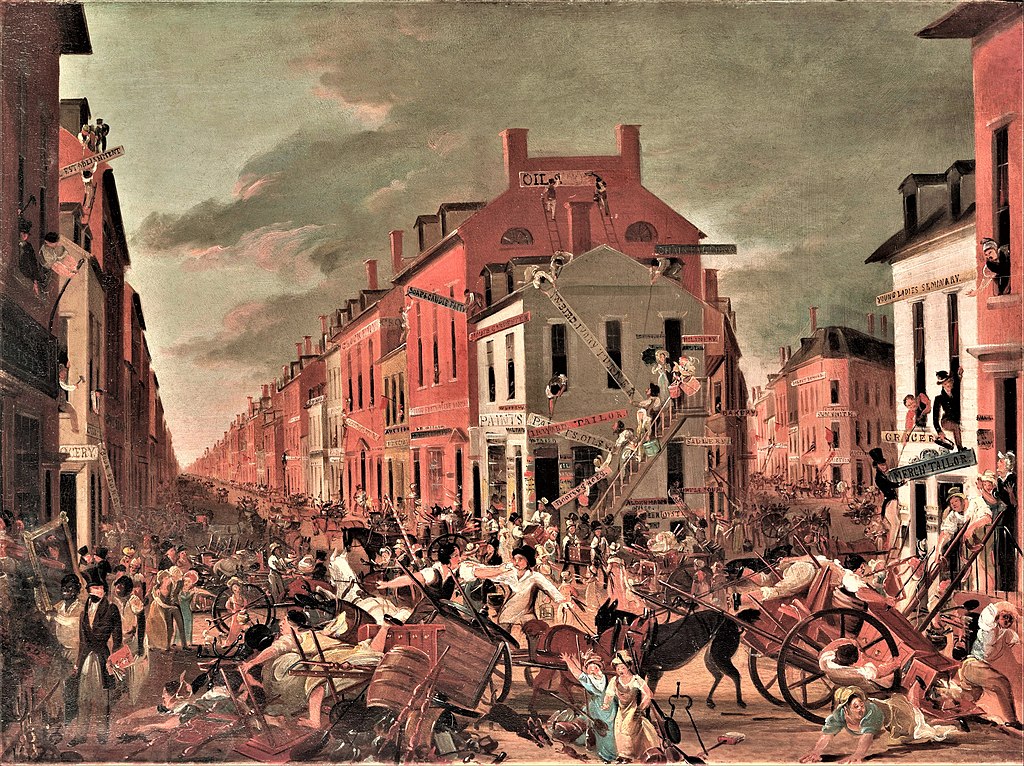And Just Like that…we’re Back in the Chaos of the 1800s

^ if you think New York in July smells foul now, just imagine horses everywhere, zero hygiene, so much wool...
Reflecting back in time is disorienting because while 2003 feels like it couldn’t have been more than 10 years ago, somehow two decades have slipped by. Conversely, the early 1800s read like they’re on par with the primitive ways of the Bronze Age, yet they were just a mere 200 years in the rear view mirror. I’m confident that in two centuries, some girl writing a newsletter loosely tied to her profession will on multiple occasions write at length about how much of a violent hellscape the 2000s were, making a clear point of distancing herself from the human beings who sold pictures of their feet online to total strangers, drank Four Lokos, and willingly wasted years of their lives watching other people lip sync in 30 second clips. And I’m sure some girl trying to escape the chokehold of female suppression by getting an education in 1823, after learning about the mayhem of early colonists (see: Salem Witch Trials), wrote in her journal, “…what the actual…”
I know I’ve covered this before but please humor me, it’s a phase I’m in. To help remind ourselves that while there’s no getting around the fact that we currently exist in time of utter bedlam, the trials and tribulations of the 1800s were far worse than anything experienced at Burning Man 2023.

1. There used to be only one day of the year that everyone was allowed to move on
If there’s one reason alone that would keep me out of the 1800s in New York it would be that in 1820 the New York Legislature mandated that all leases in New York had to end at 9am on May 1st, and so Moving Day was born. Just let that sink in. In a time before cars and task rabbits, every single New Yorker filled up their WAGON and entered the fray at the same exact time on the same exact day to try to move across the city. The unquantifiable idiocy of this: cue total pandemonium on unpaved streets tangled up with carts, wagons, and horses, all while cartsmen price gouged their clients. This unhinged practice continued into the early 20th century, with the lack of able bodied men at the start of WWII bringing this nonsense to an end.
2. The city basically decided to REDRAW the entire grid of an already fully populated city
Thank god there was no online public forum to air your grievances on during the 19th century – in the impossible-to-complete-without-severely-disrupting-the-lives-of-everyone Commissioner’s Plan of 1811, the powers-that-be decided to implement a grid system from Houston all the way to 155th Street with complete disregard that people already lived within this massive swath of land. You think a year of L train disruptions is bad? This took a whopping 60 years to complete, involved nonstop corruption, and the city played a lot of “this is mine!” by abusing eminent domain. I touched on this one in more detail few years ago if you want to be humbled for complaining about how the Second Avenue Subway construction inconvenienced you at one point.
3. A boating disaster that killed over 1,000 New Yorkers and wiped out an entire neighborhood
I’m always surprised about how few people know about this one. In 1891, there was this steamboat, the PS General Slocum, that was fraught with issues and just a massive liability. In 1904, it was on a chartered run carrying 1,400 German Americans to a church picnic and a discarded cigarette made its way to a cabin full of gasoline, igniting the wooden boat on fire. Swimming wasn’t a commonly learned pastime and the lifejackets were useless, as most were either rotted, filled with granulated cork, or the lifejacket company put iron bars in them to make weight requirements, causing whoever wore those jackets to sink to the bottom. 1,021 people died and many claim that this loss of life left such a void in Little Germany that the neighborhood seemed to disappear after.
4. The Statue of Liberty was a lawless mess from start to finish
First, I had no idea that the Statue of Liberty was basically paid for by crowd-sourcing in both France and the United States. The French were to pay for the statue and the Americans were to pay for the pedestal and both governments wanted literally nothing to do with it. Other cities refused to help unless the statue was placed in their harbor. Finally, newspaper magnate Joseph Pulitzer used his outreach to scramble together the $100,000 needed to complete the pedestal. Once paid for, the seemingly nonsensical statue took a painstaking 10 years to build and came in 350 pieces and 214 crates with a single manual. And of course things ended as they started, with the unveiling being a total fiasco.
5. New York was once the oyster capital of the world, well before we polluted all of our rivers
The New York Henry Hudson stumbled upon in 1609 housed 350 square miles of Oyster reefs in what now are the waters surrounding the New York metro area, which was half the world’s oyster population at that time. What started as an export business in the 18th century turned into Oystermania in the 19th century, with oyster cellars popping up literally everywhere, serving oysters to the full range of clientele. However as the saying goes, we can’t have nice things, and New Yorkers over-harvested, destroyed many reefs expanding the city, and practiced zero proper waste management, depleting and toxifying the once-abundent oyster beds.
Are you more of a pictures than words person?
This interactive map compares New York of 1836 to today – click here
26 wild photos of New York when it was essentially farmland – click here